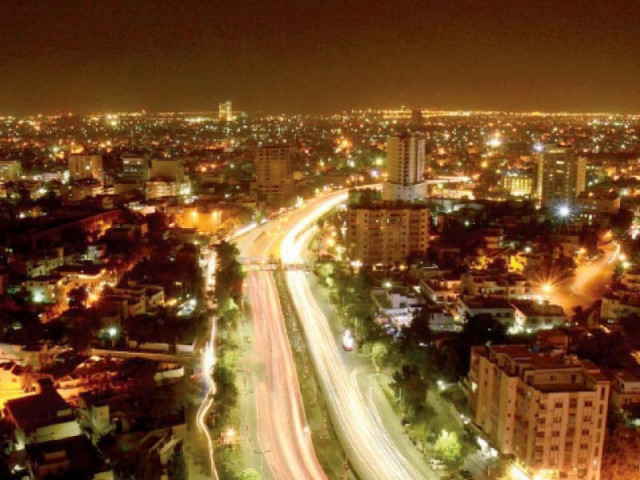Resilience and realities: Unpacking Pakistan's economic landscape
Pakistan's economy has been grappling with a protracted period of economic turbulence

Pakistan's economy has been grappling with a protracted period of economic turbulence. This enduring challenge has engendered a pressing need for comprehensive analysis and proactive solutions to foster sustainable growth and stability within the nation's economic landscape. India's economic performance was stronger than Pakistan's from 2014-2022, mainly as it was able to keep its inflation under relatively better control during this period. The reasons for this are that Pakistan's economic policy was politically driven from 2014-2018 and it wanted a highly valued rupee. It kept its currency fixed against the dollar for a short-term period of growth and was not able to sustain that as foreign exchange reserves dwindled. On the contrary, India's economic policy was driven by market forces, and it kept a flexible exchange rate for the full period (2014-2022), only using market operations in extreme cases. India maintained a high quantity of foreign reserves throughout and did not have to increase its interest rates to the levels Pakistan did.
The exchange rate policies for both countries differed as well with Pakistani Central Bank actions being influenced by political forces and the currency remains pegged by market intervention (selling USD) using loans from the IMF from 2014-2018. Post 2018, there was a government change, and a new IMF program was implemented to allow the exchange rate to fluctuate and be dictated by the market rather than borrowing resources to maintain a certain level. On the other hand, from 2014 – 2022, India maintained a flexible exchange rate that promoted more economic stability and helped local industry.
Furthermore, inflation rates in Pakistan have increased exponentially whilst India has managed to keep their inflation rates under control. Between 2014-2018, Pakistan's inflation rate remained more or less constant, but from 2018-2022, the inflation rate has risen from around 6% to 25% as the import bill increased due to the depreciation of Pakistani rupee, and the cost of import increasing for key items such as oil, electricity, gas. Conversely, India has managed to keep its inflation rate low after the inflation crisis of 2012-2013 and has managed to keep it around the target rate of 5% for most of the 2014-2023 period.
Pakistan's economic landscape has witnessed a notable transformation over the past few years, as indicated by key economic indicators. Pakistan's exports went from $30.56 billion USD to around $39.42 billion USD in the period 2018-2022. However, when talking about GDP per capita, the same positive trend cannot be seen. In 2018, the Gross Domestic Product (GDP) per capita in Pakistan stood at $1,620 USD, reflecting the country's economic status at the time. However, by 2022, this figure had experienced a decline, reaching $1,653 USD. This decline underscores a concerning trend of economic contraction during this period. However, Pakistan's exports went from $30.56 billion USD to around $39.42 billion USD in this period. Turning our attention to India's global trade performance, Indian exports also experienced a notable upswing over the period from 2018 to 2022. During this interval, exports surged from $20.3 billion USD to an impressive $32.5 billion USD. This expansion reflects India's resilience in the global marketplace, marked by efforts to diversify its export portfolio and strengthen trade ties with key international partners. The GDP per capita also saw an increase in this period, with it being approximately $1974 USD in 2018 and $2389 USD in 2022, showing a positive trend.
The future of Pakistan's economy seems to be very uncertain at this point in time. In the past, political forces had established a currency peg that led to a decline in foreign reserves, but moving forward, Pakistan's government should focus on fiscal management. Diversifying its export portfolio, which has been textile focused in the past, could also be an effective way of improving Pakistan's economy. Pakistan should also let the market dictate its exchange rate as done by India as this would avoid runaway inflation and keep the foreign reserves intact. Overall, if political stability can be achieved in Pakistan, a certain government can work towards improving the economic state of the country by implementing these policies and many more that could help stop inflation, and increase the GDP. Conversely, India's economic future looks to be bright. India's nominal GDP is projected to surge from $3.5 trillion USD in 2022 to an impressive $7.3 trillion USD by 2030, showcasing a remarkable pace of economic growth. This trajectory positions India to surpass Japan's GDP by 2030, solidifying its status as the second-largest economy in the Asia-Pacific region. The Indian government has worked towards solving India's economic issues, like solving the informal economy issue by removing the biggest bank notes from the market and hence making many people switch to banking rather than cash.
In summary, the economic trajectory of Pakistan from 2018 to 2022 has been marked by a declining GDP per capita, a significant reduction in fixed investment and an increasing external debt burden. These indicators collectively underscore the pressing need for comprehensive economic reforms and strategies to revitalize Pakistan's economy and position it on a path toward sustained growth and development. Whilst political instability occurred in Pakistan, being a major reason for these issues, India had more stable governments. Although India has seen a persistent decline in its investment to GDP ratio in the 2014-2022 period, and declining net exports, there are some positives such as the relatively controlled inflation rate and an increasing GDP per capita. Overall, India has performed better and for Pakistan to improve their economic situation, political stability as well as inflation measures such as those taken by India need to be implemented. Pakistan must prioritize political stability, adopt inflation control measures akin to India's, and diversify its export portfolio.
Writers are students of Aitchison College, Lahore















COMMENTS
Comments are moderated and generally will be posted if they are on-topic and not abusive.
For more information, please see our Comments FAQ